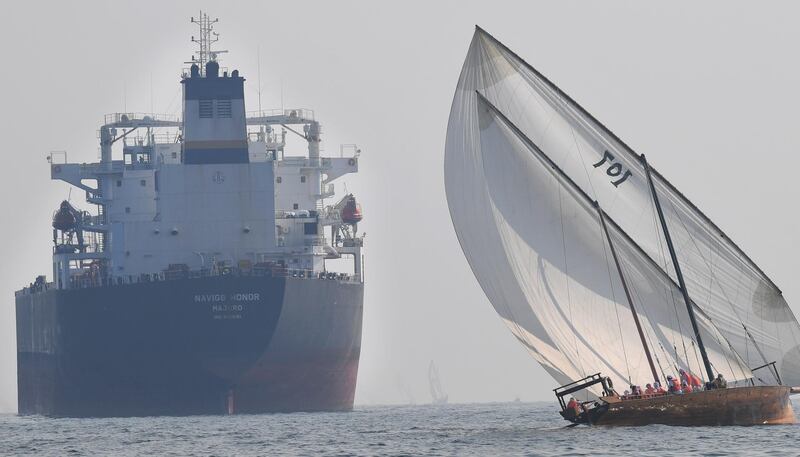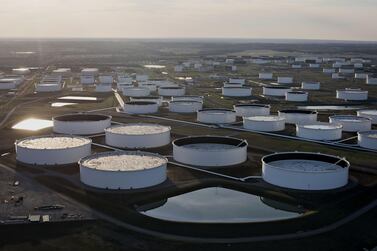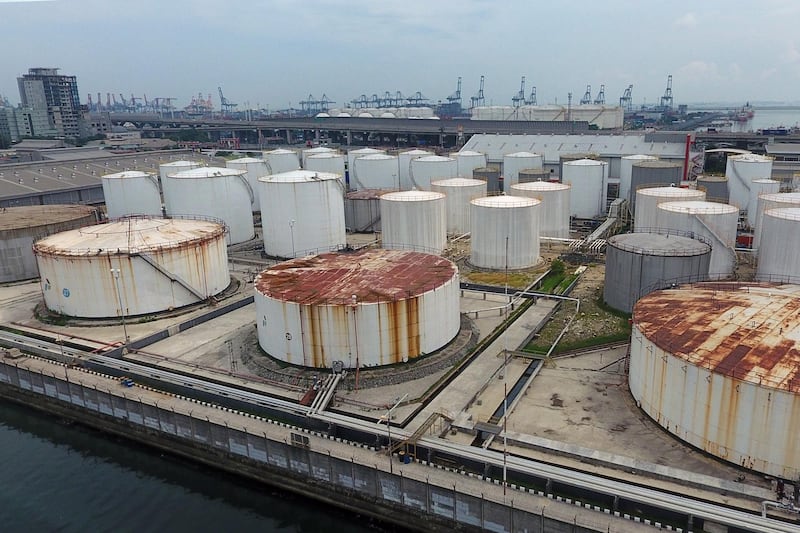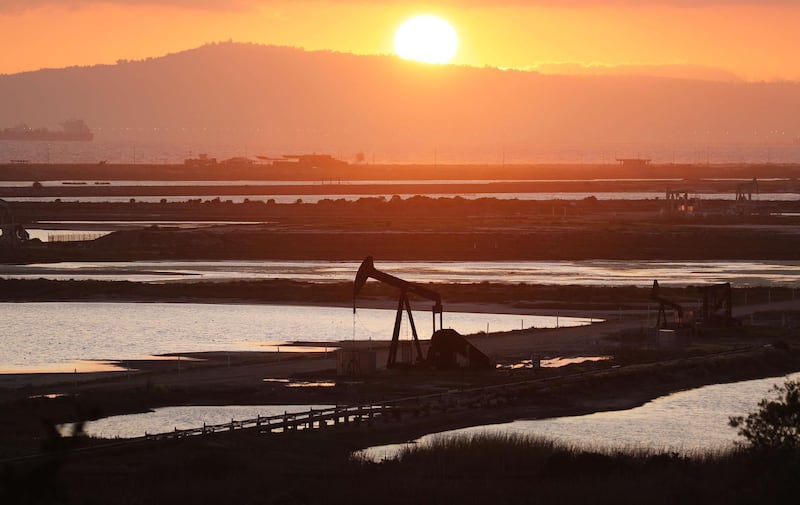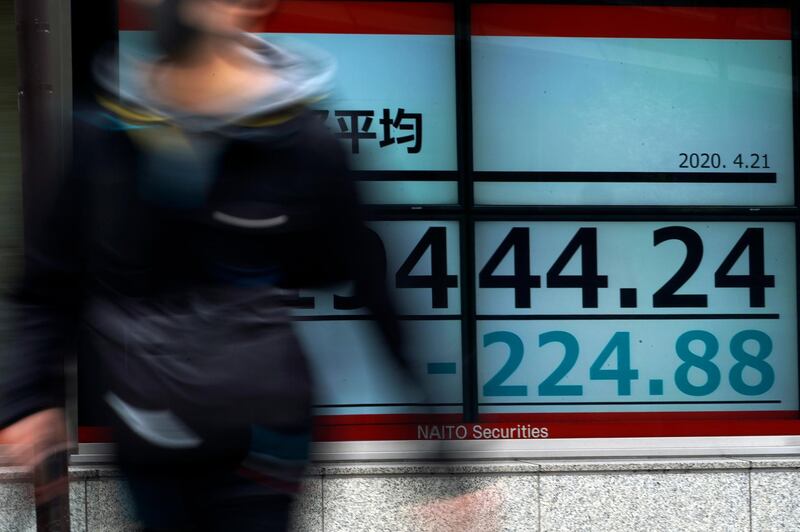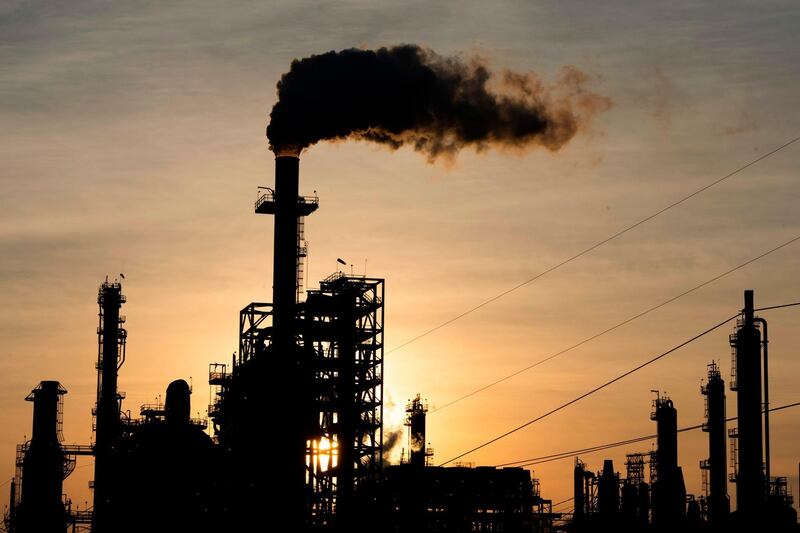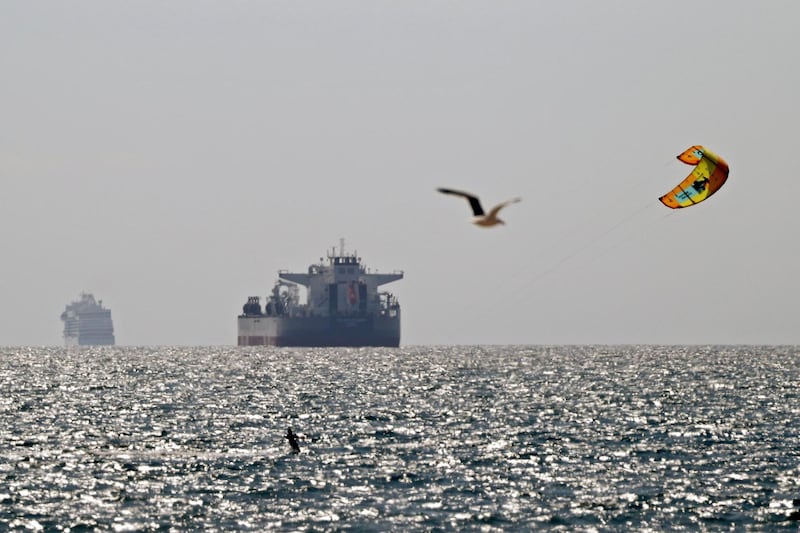Brent, the international oil benchmark, fell to its lowest level in more than two decades and then regained ground, a day after its US counterpart collapsed into negative territory.
Brent, under which two-thirds of the world's oil is traded, recovered from its decline from yesterday rising 12.36 per cent to trade at $21.72 per barrel at 5.52pm UAE time, however, it remains less volatile than West Texas Intermediate, the US benchmark.
WTI, which slipped into negative territory for the first time earlier this week, recovered slightly. Its June contract was up 24.72 per cent, trading at $14.43 per barrel on Wednesday. Traders fear the June contract may follow the previous monthly contract in slipping into negative pricing after it rapidly lost value yesterday.
WTI traded in positive single digits late Tuesday after slipping back into the negative during early trading. The May contract settled at -$37.61 per barrel on Monday as limited storage options and a painful demand crunch wrought by the coronavirus pandemic hurt prices.
Explained: What is negative oil price?

The outbreak of the coronavirus pandemic has battered demand for crude and led to a surfeit of oil inventories as a result of lockdowns and travel restrictions across the world. With more than 2.5 million people infected globally and most of the world in quarantine, demand for crude faded and storage capacity peaked.
Brent, which had held steady above $20 per barrel, while its US counterpart sank below zero, began to decelerate yesterday.
"A similar fate seems unlikely for Brent," said Jasper Lawler, head of research at London Capital Group.
"The storage options for US crude are a lot more limited. Still, the near term pressure on oil prices doesn’t look like lifting yet," he added.
WTI is settled by physical delivery unlike Brent, which relies on cash settlement. Brent is also more mobile than WTI because it is transported by sea, while US oil is produced in landlocked areas and its physical delivery point, in the inland town of Cushing, Oklahoma, is stretched to capacity in terms of storage.
With producers likely to shut-in production in the US as they run of storage options, Wood Mackenzie expects a drop in global supply by the third quarter of 2020, which is set to stabilise the markets.
Opec+ is also cutting production by 9.7 million barrels per day in May and June with tapered cuts in place until 2022.
"In our estimation, oil demand in April is also facing the greatest impact from coronavirus containment measures, as several countries begin easing these steps in May," said Ann-Louise Hittle, vice president, macro oils at Wood Mackenzie.
Demand is likely to decline by 15m and 18m bpd in April, with slightly less of a decline in May, according to the consultancy.
"The second half of the year should see a slow unwinding of the demand destruction Covid-19 wreaked on the market," said Ms Hittle.
Investment bank Julius Baer meanwhile stuck to a more neutral view for oil prices, dismissing WTI's meltdown as nothing more than a "glitch" exacerbated by exchange trade fund (ETF) activity and low storage capacity.
The bank said its preferred benchmark remained Brent, thanks to the stability provided by its underlying seaborne trading.
"The flows of money into and out of the oil futures market causes deviations from fundamentally justified levels, especially if the underlying motivation is not purely fundamental but excessive optimism or excessive pessimism," said Norbert Rücker, head of economics, and next-generation research at the bank.
Meanwhile, the International Energy Agency, which estimated a demand collapse of 29m bpd for April - the lowest since 1995 - called on producers to do more.
"Production cuts need to be made as soon as possible without waiting," its executive director Fatih Birol told Bloomberg TV on Wednesday.
"If no further measures are fully put in place, we may see further downward pressure," he said, observing that the oil markets were in for a difficult phase "until June".
Some media have reported a number of Opec+ members may have convened to implement additional cuts in order to ensure that their economies, which depend overwhelmingly on oil revenues are protected from the price slump.
With delivery commitments for April already in place, it is unlikely that some can roll back their earlier pledges.
Gulf Opec+ producers have pledged to cut another 2.2m bpd in addition to the record 9.7m bpd drawback.
